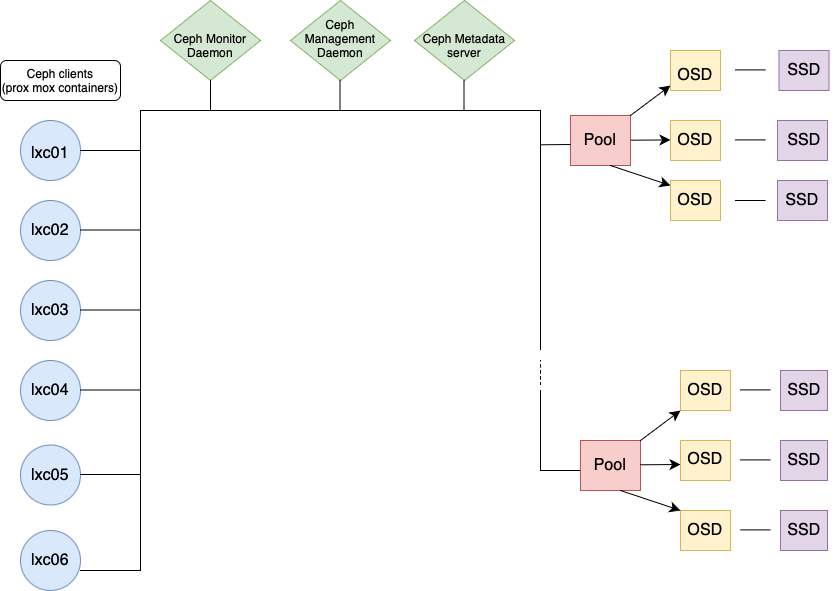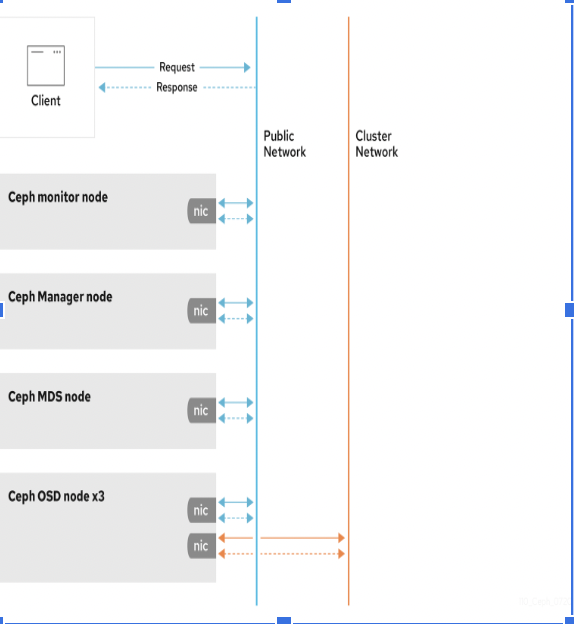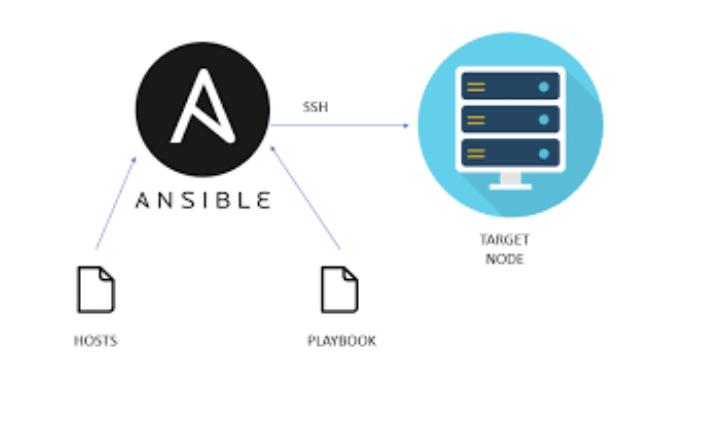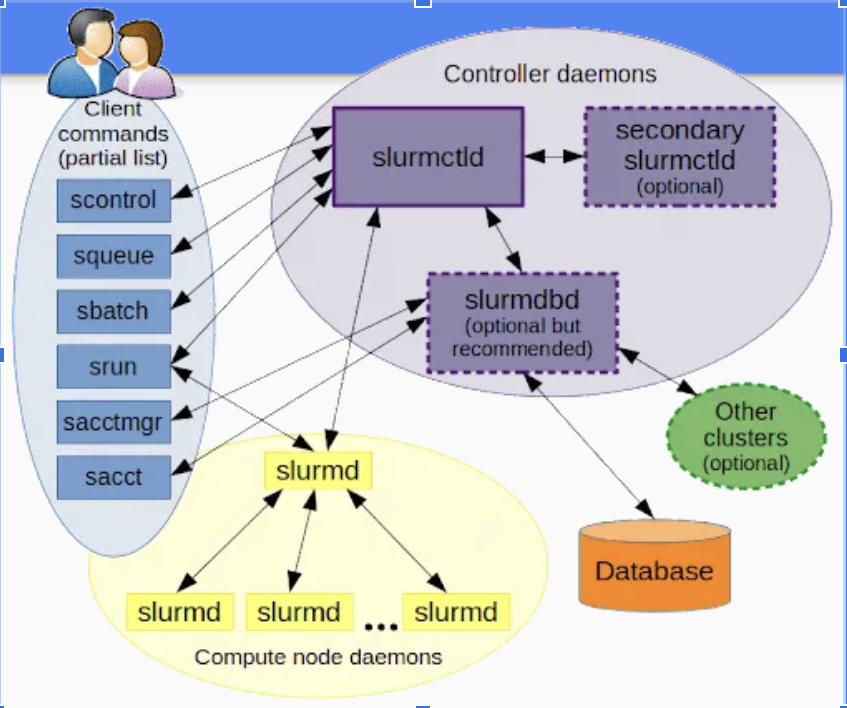| Version 60 (modified by , 2 years ago) ( diff ) |
|---|
Distributed Data Infrastructure
Project Advisor: Professor Alexei Kotelnikov
Team Members: Keshav Subramaniyam, Jason Zhiyuan Zhang, Samyak Agarwal, Anna Kotelnikov, Gyana Deepika Dasara
Objective Of This Project
The objective of the project "Distributed Data Infrastructure focuses in general on developing a Ceph file system as well as stress testing the system's robustness and resilience. In order for us to be able to accomplish this goal, we are learning multiple concepts such as the Linux operating systems, file systems, networking, as well as Ansible.
Week 1
Summary
- Understood the goal of the project.
- Installed packages and wired a cluster of 8 servers.
- Got familiar with Linux by practicing some simple Linux commands.
Idea Of Our Progress This Week
Our main goal for this week was to spend time understanding the goal of the project and installing the necessary tools that would be used throughout the project, such as SSH, Orbit, Linux Packages, and eight cluster servers. We also got access to our Wireguard where we would be getting access to containers. We also installed and wired a cluster of 8 servers and issued some commands from our LXC containers in our terminal where we worked with Linux.
We then understood some of the basic commands that would be useful for some more advanced work in the project. The final thing that we did was to install Debian and Ubuntu packages, removing Ubuntu packages with APT, and also searched and queried Ubuntu packages with APT.
Project Resources
Linux Exercises: https://linuxcourse.rutgers.edu/Winlab_Internship_2023/html/linux_commands.html
Linux Package Installation: https://linuxcourse.rutgers.edu/Winlab_Internship_2023/html/debian_packaging.html
Week 2
Summary
- Installed Debian Linux in Hard Drives
- Solidified our understanding of networking as well as the Network File Systems (NFS).
- Worked with start and stop services as well as job schedulers.
How Our Cluster Should Look Like
Idea Of Our Progress This Week
This week, we spent more time installing more drives to work with throughout the project. To understand the interaction that these drives would go through, we spent time studying one of the most fundamental file systems that are useful for this project, known as the network file system, which is basically a method for sharing files where "files reside on one or more remote servers accessible on a local client system", according to the course that we followed for this project. We mounted NFS and also booted up the BIOS which would prove useful for this project.
SSD Drive Anatomy
Week Resources
Debian Networking: https://linuxcourse.rutgers.edu/Winlab_Internship_2023/html/debian_networking.html
Network File Systems (NFS): https://linuxcourse.rutgers.edu/Winlab_Internship_2023/html/NFS.html
Start And Stop Services: https://linuxcourse.rutgers.edu/Winlab_Internship_2023/html/systemd.html
Article On Network File Systems (NFS): https://www.weka.io/learn/file-storage/what-is-network-file-system/
Week 3
Summary
- Went over Shell Scripting and Python Scripting
- Worked With Distributed File Systems
- Performance Testing for ZFS and also MDRAID
Idea Of Our Progress This Week
This week we were introduced to the idea of shell scripting as well as Python scripting and worked on some exercises in general. We also did the manual work of replacing the old network switch in the cluster with the new, 1 Gbit 48 port switch and also configured 2 vlans on the switch. After installing the Samsung drives, we noticed that new devices were added along with /dev/sda, /dev/sdb, /dev/sdc, /dev/sdd. After that, we spent some time reading more articles about HPC Storage and about how that generally works. We then learnt about some of the most fundamental file systems that are useful for this project including ZFS, MDADM, as well as RAID.
Before installation output: hostadm@node04:~$ lsblk NAME MAJ:MIN RM SIZE RO TYPE MOUNTPOINTS sda 8:0 0 447.1G 0 disk ├─sda1 8:1 0 512M 0 part /boot/efi ├─sda2 8:2 0 445.7G 0 part / └─sda3 8:3 0 977M 0 part [SWAP] sr0 11:0 1 738M 0 rom
After installation output: hostadm@node05:~$ lsblk NAME MAJ:MIN RM SIZE RO TYPE MOUNTPOINTS sda 8:0 0 447.1G 0 disk ├─sda1 8:1 0 512M 0 part /boot/efi ├─sda2 8:2 0 445.7G 0 part / └─sda3 8:3 0 977M 0 part [SWAP] sdb 8:16 0 465.8G 0 disk sdc 8:32 0 465.8G 0 disk sdd 8:48 0 465.8G 0 disk sr0 11:0 1 738M 0 rom
The RAID (redundant array of independent disks) is a way of storing the same data in different places on multiple hard disks, while the MDADM is a Linux utility used to create, manage, as well as monitor software-based RAID devices. We used the concepts that we then learnt in order to test MDRAID as well as ZFS for disk failure. We did the following: exported /scratch file system (RAID 5) which is built on 3 drives from the nodes to our LXC containers, mounting it there in general. We then checked the I/O performance on /scratch on the file server, and the node, and we finally checked the I/O performance of the NFS mounted file system. Here are some diagrams with some of the statistics of the comparison between local vs remote performance as well as normal versus degraded performance.
We used the DD command to do the I/O scripting. After that, we captured an installation image on FOG after Debian 12 was installed in node03, and we learnt about the GRUB software for recovery purposes.
Week Resources
Shell Scripting: https://linuxcourse.rutgers.edu/Winlab_Internship_2023/html/shell_scripting.html
Python Scripting: https://linuxcourse.rutgers.edu/Winlab_Internship_2023/html/python_scripting.html
MDADM/ZFS Raid Configurations: https://linuxcourse.rutgers.edu/Winlab_Internship_2023/html/Raid_configurations.html
Week 4 + Week 5
Summary
- Focused on Ceph installation
- Did some troubleshooting relating to OSDs
- Ran I/O dd and fio scripts using Ceph
- Installed Debian 11.7
Idea Of Our Progress This Week
This was probably the week where we did the most chunk of work that was relevant to the project, which was getting into the process of Ceph installation as well as working with Ceph. We watched three videos about how Ceph works, data security, as well as the process of self-balancing and also self-healing. While we were trying to mount Ceph, there was a lack of OSDs and we spent Week 4 trying to troubleshoot the problem. After spending a long time with troubleshooting, we found out that we actually had an older version of Ceph installed. To fix this, we needed to change the uid, gid, as well as the group container too. After that, we installed the Debian 11 and did the Ceph installation through that.
Here is how the Ceph diagram works:
- Data arrives to the file system/pool
- Splits into chunks (pool groups)
- Metadata and replicas are created and then stored into OSDs.
Week Resources
- Ceph Installation On One Node: https://linuxcourse.rutgers.edu/Winlab_Internship_2023/html/Ceph_one_node.html
- Building Ceph: https://docs.ceph.com/en/quincy/install/build-ceph/
- How Ceph Works: https://www.youtube.com/watch?v=HJivYTJ9Y54
- Data Security: https://www.youtube.com/watch?v=HJivYTJ9Y54
- Self Balancing and Self Healing: https://www.youtube.com/watch?v=jBWVcJYNjeA&t=8s
Week 6
Summary
- Ceph one node manual installation
- Created lxc Ansible containers
- Worked with Ansible playbooks
Idea Of Our Progress This Week This week, we spent most of our time focusing on the manual side installation of Ceph. In order for us to do it, we set up the manager as well as the monitor service setup. We also set up the dashboard, storage pool, file system, and also the CephFS setup. After that, we went over Ansible tasks and went. over how to work with Ansible tasks using yaml scripts which are also known as the Ansible playbooks. We then created playbooks in order for us to be able to fix hostname tasks. After that, the final thing that we did was to setup the LXC ansible container in order for us to test further configurations. We used passwordless sudo, deployed Ceph on one node, and created an Ansible playbook in order for us to mount the Ceph FS.
Week Resources
- Ceph One Node Manual Installation: https://linuxcourse.rutgers.edu/Winlab_Internship_2023/html/Ceph_manual_installation.html
- Ansible Configuration Management: https://linuxcourse.rutgers.edu/Winlab_Internship_2023/html/Ansible_configuration.html
- Ansible Management LXC Setup: https://linuxcourse.rutgers.edu/Winlab_Internship_2023/html/Ansible_installation.html
Week 7
Summary
- Added and removed cluster networks to our Ceph nodes
- Enabled the second network interface in our node
- Added the cluster network in the configuration
- Manually added the new node to the Ceph cluster
- Developed Ansible playbooks to automate the process
Idea Of Our Progress This Week This week, we spent most of our time focusing on the manual side installation of Ceph. In order for us to do it, we set up the manager as well as the monitor service setup. We also set up the dashboard, storage pool, file system, and also the CephFS setup. After that, we went over Ansible tasks and went. over how to work with Ansible tasks using yaml scripts which are also known as the Ansible playbooks. We then created playbooks in order for us to be able to fix hostname tasks. After that, the final thing that we did was to setup the LXC ansible container in order for us to test further configurations. We used passwordless sudo, deployed Ceph on one node, and created an Ansible playbook in order for us to mount the Ceph FS.
Week 8
Summary
- Added and removed cluster networks to our Ceph nodes
- Enabled the second network interface in our node
- Added the cluster network in the configuration
- Manually added the new node to the Ceph cluster
- Developed Ansible playbooks to automate the process
Idea Of Our Progress This Week This week, we spent most of our time focusing on the manual side installation of Ceph. In order for us to do it, we set up the manager as well as the monitor service setup. We also set up the dashboard, storage pool, file system, and also the CephFS setup. After that, we went over Ansible tasks and went. over how to work with Ansible tasks using yaml scripts which are also known as the Ansible playbooks. We then created playbooks in order for us to be able to fix hostname tasks. After that, the final thing that we did was to setup the LXC ansible container in order for us to test further configurations. We used passwordless sudo, deployed Ceph on one node, and created an Ansible playbook in order for us to mount the Ceph FS.
Week 9
Summary
- SLURM Installation
- MATPLOTLIB Post Processing
- Performance Testing With Graphs
Idea Of Our Progress This Week This week, we worked on installing SLURM, which is basically a job scheduler for Linux clusters. We first installed SLURM on LXC containers, restarted the node, and finally ran benchmarks using SLURM. We also setup infiniband networks on the cluster and also continued to run performance tests.
Week 10
Summary
- Further Benchmarking
- Created the poster
- Worked on the final presentation for the program
Idea Of Our Progress This Week We did not do very much this week except for finalizing the portfolio for the project and also doing some final run throughs and testing as well. The main work that we did do however was to work with a 3 node Ceph cluster. We ran benchmarks on 3 node Ceph clusters and ran fio as well on a mounted file system on node08. The final thing that we did was to model disaster recovery. Week Resources
- Three Node Ceph Cluster: https://linuxcourse.rutgers.edu/Winlab_Internship_2023/html/three_node_cluster.html
Presentation Links
- Week 1 (June 05 - June 09): https://docs.google.com/presentation/d/1-KpBGlFWiV0LEJFXrU6Nk_VxNchvado48oIbh6KHOdk/edit#slide=id.p
- Week 2 (June 12 - June 16): https://docs.google.com/presentation/d/1Pujv2HFNYLHuhLFh_0tSRZg4yv6gs8nNNyNNcMXD8s8/edit#slide=id.p
- Week 3 (June 19 - June 23): https://docs.google.com/presentation/d/1uBwrVGlGCIyD_Ex1miklX3PFOZ2JsUqF-Jm7kR1JiSY/edit#slide=id.p
- Week 4 (June 26 - June 30): https://docs.google.com/presentation/d/1VeIosZZ-GPm8SnB294C6rbX2b-hYHRSArvzhm4MPiY4/edit#slide=id.p
- Week 5 (July 3 - July 7): https://docs.google.com/presentation/d/1-GlYdTUVjstotg2bEqquZz5WvsGXw3R0301GuNqOkq0/edit#slide=id.p
- Week 6 (July 10 - July 14): https://docs.google.com/presentation/d/1-GlYdTUVjstotg2bEqquZz5WvsGXw3R0301GuNqOkq0/edit#slide=id.p
- Week 7 (July 17 - July 21): https://docs.google.com/presentation/d/11OnqS8HUQT1ipjDuqICwsVQrfv0_AZFqHEjgwRpKNZw/edit#slide=id.g25ab189147e_3_5
- Week 8 (July 24 - July 28): [Slides]
- Week 9 (July 31 - August 4): https://docs.google.com/presentation/d/1-mlnMaOQyuYR4uzl357ZnpLlohKaLmN6NtvcZnTCSzU/edit#slide=id.p
- Final Presentation: https://docs.google.com/presentation/d/1-GlYdTUVjstotg2bEqquZz5WvsGXw3R0301GuNqOkq0/edit#slide=id.g258895db9c7_2_20
- Poster: https://docs.google.com/presentation/d/1MDlNHecW9MYjAh-Vn4cb5j_hOdwMYN3i/edit#slide=id.p1
Attachments (19)
- TT_tree_mobile.jpeg (14.5 KB ) - added by 2 years ago.
- June5.jpg (1.4 MB ) - added by 2 years ago.
- June6_1.jpg (124.3 KB ) - added by 2 years ago.
- June6.jpg (126.2 KB ) - added by 2 years ago.
- June6_2.jpg (201.3 KB ) - added by 2 years ago.
- June6_2.2.jpg (201.3 KB ) - added by 2 years ago.
- cluster.jpg (43.6 KB ) - added by 2 years ago.
- WINLAB presentation week 6_19 (1).jpg (53.9 KB ) - added by 2 years ago.
- WINLAB presentation week 6_19 (2).jpg (53.9 KB ) - added by 2 years ago.
- Ceph diagram.png (105.0 KB ) - added by 2 years ago.
- IMG_6645.jpg (46.8 KB ) - added by 2 years ago.
- Screen Shot 2023-08-07 at 2.34.32 PM.png (141.5 KB ) - added by 2 years ago.
- Screen Shot 2023-08-07 at 2.52.50 PM.png (482.1 KB ) - added by 2 years ago.
- Screen Shot 2023-08-07 at 2.54.45 PM.png (74.2 KB ) - added by 2 years ago.
- Ceph.png (130.2 KB ) - added by 2 years ago.
- PerformanceTestingGraphs.png (74.2 KB ) - added by 2 years ago.
- Ansible-Playbook.png (141.5 KB ) - added by 2 years ago.
- SLURM.png (482.1 KB ) - added by 2 years ago.
- PerformanceTestingGraphs.2.png (74.2 KB ) - added by 2 years ago.

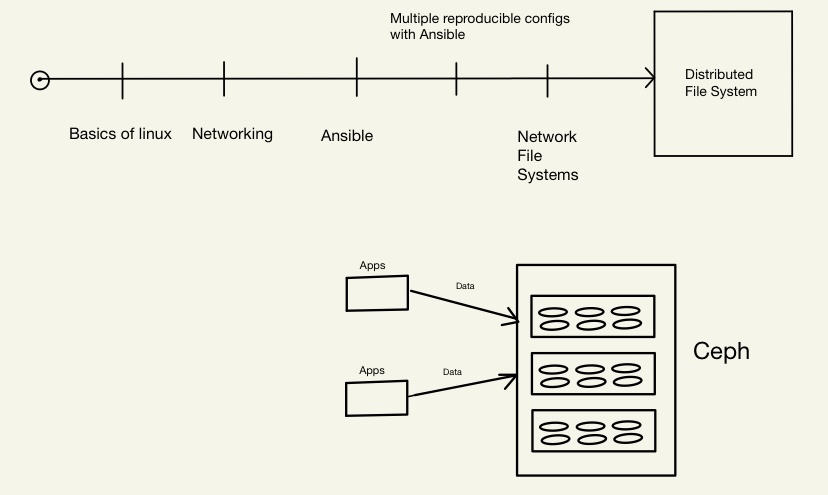
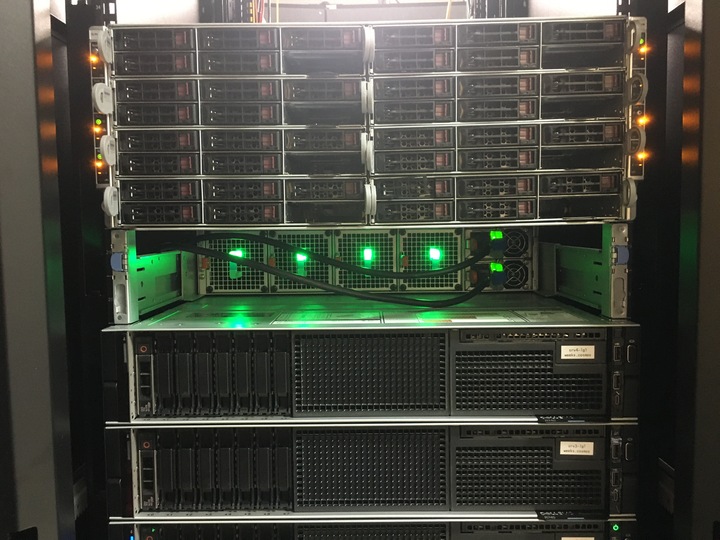
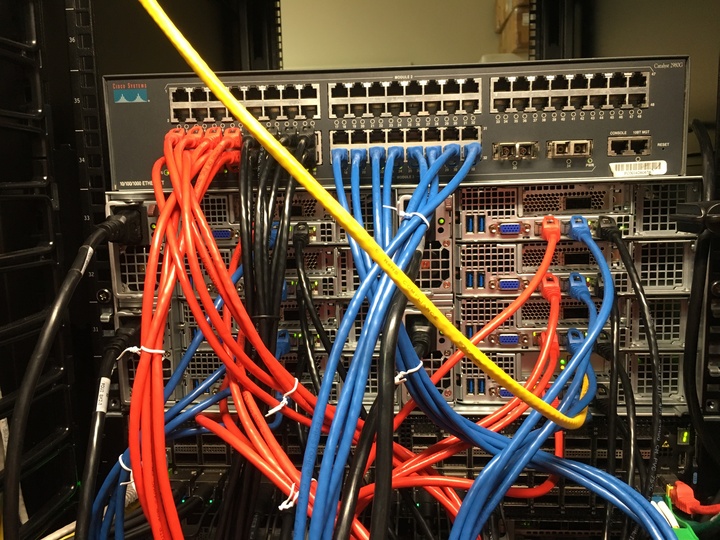

.jpg)
.jpg)
